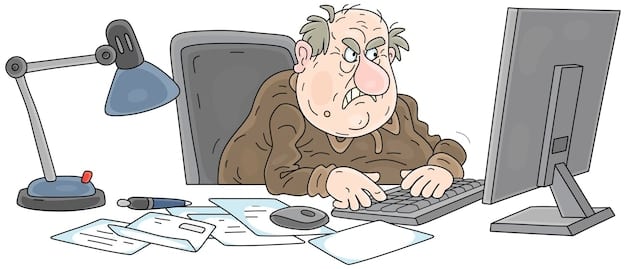Avoid Burnout: 5 Essential Stress Management Techniques for 2025

Avoid burnout in high-pressure jobs by implementing effective stress management techniques like mindfulness, time management, physical activity, social support, and setting realistic boundaries, crucial for maintaining well-being in 2025.
In today’s fast-paced work environment, especially in high-pressure jobs, the risk of burnout is a significant concern. To avoid burnout: 5 essential stress management techniques for high-pressure jobs in 2025 can be a game-changer, helping you maintain your well-being and productivity.
Understanding Burnout in High-Pressure Jobs
Burnout isn’t just feeling tired; it’s a state of emotional, physical, and mental exhaustion caused by prolonged or excessive stress. Recognizing the signs and understanding the causes are the first steps in preventing it.
Common Signs of Burnout
Burnout manifests in various ways, affecting your work and personal life. It’s essential to be aware of these signs to take timely action.
- Exhaustion: Persistent fatigue that isn’t relieved by rest.
- Cynicism: A negative or detached attitude towards your job.
- Reduced Performance: Difficulty concentrating and decreased productivity.
- Physical Symptoms: Headaches, digestive issues, and sleep disturbances.
Causes of Burnout
Several factors can contribute to burnout, particularly in high-pressure jobs. Identifying these risk factors can help you develop targeted strategies to manage them.
- Unrealistic Expectations: Setting unattainable goals or having overly demanding workloads.
- Lack of Control: Feeling powerless over your work and decisions.
- Insufficient Recognition: Not receiving adequate acknowledgment for your efforts and achievements.
- Poor Work-Life Balance: Inability to separate work from personal life.

Understanding these signs and causes is crucial for proactive prevention. By recognizing burnout early, you can implement strategies to mitigate its impact and maintain a healthy work-life balance.
Technique 1: Practicing Mindfulness and Meditation
Mindfulness and meditation are powerful tools for managing stress and preventing burnout. These practices help you become more aware of your thoughts and feelings, allowing you to respond to stress in a calm and controlled manner.
Benefits of Mindfulness
Mindfulness involves paying attention to the present moment without judgment. Integrating mindfulness into your daily routine can have profound benefits for your mental and emotional well-being.
- Stress Reduction: Mindfulness helps lower cortisol levels, reducing feelings of stress and anxiety.
- Improved Focus: Regular practice enhances your ability to concentrate and stay present.
- Emotional Regulation: Mindfulness teaches you to observe and manage your emotions, preventing them from overwhelming you.
How to Meditate
Meditation can seem daunting, but it’s a simple practice that anyone can learn. Start with just a few minutes each day and gradually increase the duration as you become more comfortable.
- Find a Quiet Space: Choose a place where you won’t be disturbed.
- Sit Comfortably: Sit in a chair or on the floor with your back straight but relaxed.
- Focus on Your Breath: Pay attention to the sensation of your breath entering and leaving your body.
- Acknowledge Thoughts: As thoughts arise, gently acknowledge them and redirect your attention back to your breath.
Mindfulness and meditation are not about emptying your mind; they’re about training your mind to be present and aware. With regular practice, you can develop a greater sense of calm and resilience, helping you to manage stress and prevent burnout.
Technique 2: Mastering Time Management and Prioritization
Effective time management and prioritization are essential for handling high-pressure jobs without getting overwhelmed. By organizing your tasks and setting priorities, you can reduce stress and increase productivity.
Effective Time Management Techniques
Time management is about making the most of your time and focusing on the tasks that matter most. Several techniques can help you achieve this.
- Pomodoro Technique: Work in focused 25-minute intervals, followed by a 5-minute break.
- Time Blocking: Schedule specific blocks of time for different tasks.
- Eat the Frog: Tackle your most challenging task first thing in the morning.
Prioritization Strategies
Prioritizing tasks ensures that you focus on the most important items first. This reduces the feeling of being overwhelmed and helps you make meaningful progress.
- Eisenhower Matrix: Categorize tasks based on urgency and importance.
- Pareto Principle (80/20 Rule): Focus on the 20% of activities that yield 80% of the results.
Time management and prioritization are not about doing more in less time; they’re about doing the right things at the right time. By implementing these strategies, you can reduce stress, increase productivity, and maintain a healthy work-life balance.

Technique 3: Incorporating Physical Activity and Exercise
Regular physical activity is a powerful stress reliever and a key component of burnout prevention. Exercise helps to release endorphins, which have mood-boosting effects, and can also improve sleep quality.
Benefits of Physical Activity
Exercise offers numerous benefits for both your physical and mental health. Incorporating regular physical activity into your routine can significantly reduce stress and prevent burnout.
- Stress Reduction: Exercise lowers stress hormones and increases endorphins.
- Improved Mood: Physical activity can alleviate symptoms of depression and anxiety.
- Better Sleep: Regular exercise promotes better sleep quality, which is crucial for recovery.
Types of Exercise
The best type of exercise is the one you enjoy and can stick with long-term. Consider incorporating a variety of activities into your routine to keep things interesting.
Consider incorporating a variety of activities into your routine to keep things interesting.
- Cardiovascular Exercise: Activities like running, swimming, and cycling improve heart health and boost energy levels.
- Strength Training: Lifting weights or doing bodyweight exercises builds muscle and improves overall strength.
- Yoga and Stretching: These practices enhance flexibility, reduce muscle tension, and promote relaxation.
Remember, even small amounts of physical activity can make a big difference. Aim for at least 30 minutes of moderate-intensity exercise most days of the week to reap the full benefits.
Technique 4: Building a Strong Social Support System
Having a strong social support system is crucial for managing stress and preventing burnout. Connecting with others can provide emotional support, reduce feelings of isolation, and offer valuable perspective.
The Importance of Social Connections
Humans are social beings, and our relationships play a vital role in our well-being. Strong social connections can buffer the effects of stress and enhance resilience.
- Emotional Support: Talking to friends and family can help you process your emotions and gain reassurance.
- Reduced Isolation: Connecting with others prevents feelings of loneliness and isolation, which can exacerbate stress.
- Diverse Perspectives: Others can offer different viewpoints and solutions to your challenges.
How to Strengthen Your Social Support System
Building and maintaining strong social connections requires effort, but the benefits are well worth it. Here are some strategies to strengthen your social support system:
- Make Time for Friends and Family: Schedule regular activities with loved ones.
- Join Social Groups: Participate in clubs, sports teams, or volunteer organizations.
- Seek Professional Support: Consider therapy or counseling if you’re struggling to cope with stress.
Nurturing your relationships is an investment in your well-being. A strong social support system can provide a sense of belonging, reduce stress, and enhance your overall quality of life.
Technique 5: Setting Realistic Boundaries and Saying No
Setting realistic boundaries and learning to say no are essential for preventing burnout in high-pressure jobs. Establishing clear boundaries helps protect your time, energy, and well-being.
Why Boundaries Are Important
Boundaries define where you end and others begin. Setting boundaries prevents you from being taken advantage of and ensures that your needs are met.
- Protecting Your Time: Saying no to excessive demands allows you to focus on your priorities.
- Preserving Your Energy: Setting boundaries prevents you from becoming emotionally and physically drained.
- Maintaining Your Well-Being: Boundaries ensure that you have time for rest, relaxation, and self-care.
How to Set Boundaries
Setting boundaries can be challenging, especially in a high-pressure work environment. Here are some tips to help you establish and maintain healthy boundaries:
- Identify Your Limits: Determine what you’re willing to do and what you’re not.
- Communicate Clearly: Express your boundaries assertively and respectfully.
- Be Consistent: Enforce your boundaries consistently to ensure they’re respected.
Setting boundaries is not selfish; it’s self-care. By establishing clear boundaries, you can protect your well-being, reduce stress, and prevent burnout.
| Key Point | Brief Description |
|---|---|
| 🧘 Mindfulness | Practice daily to reduce stress and improve focus. |
| ⏰ Time Management | Prioritize tasks and use techniques like Pomodoro. |
| 💪 Physical Activity | Incorporate regular exercise to boost mood and reduce stress. |
| 🗣️ Social Support | Build strong connections for emotional support. |
Frequently Asked Questions
▼
Early signs include chronic fatigue, cynicism, and decreased performance. Pay attention to these signals to address burnout early.
▼
Mindfulness reduces stress by lowering cortisol levels and promoting focus. It also helps in managing emotions effectively.
▼
The Eisenhower Matrix is a time management tool that categorizes tasks based on urgency and importance, helping prioritize effectively.
▼
Social support offers emotional comfort and reduces isolation, buffering the effects of stress and enhancing overall resilience.
▼
Begin by identifying your limits and communicating them clearly. Be consistent in enforcing these boundaries to maintain them effectively.
Conclusion
By implementing these five essential stress management techniques – practicing mindfulness, mastering time management, incorporating physical activity, building a strong social support system, and setting realistic boundaries – you can effectively avoid burnout in high-pressure jobs in 2025 and maintain a healthy, balanced life.





